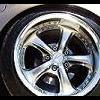Noisy Attessa
Announcements
-
Similar Content
-
Latest Posts
-
3rd gear is the most common failure. There is no good idea that contains "just upgrade 3rd gear" in it anywhere.
-
By TurboTapin · Posted
I'm surprised to hear that, but then again, I haven't dealt with a low mount turbo in years. I'm presuming it's a space restriction issue. Cheers! -
Ah, that was not the answer I was hoping for. Is it only third gear that is the weak spot? Or do you have to change the whole gearset to make it hold some power?
-
You're already well into "gearbox is a consumable" territory there. A billet plate will either make it (effectively) 1% stronbger or make it last one more pass. At some point you'll probably tear 3rd gear into small chunks and regret all the life decisions that came before it.
-
..and forum.r31skylineclub has been down all week....anyone know why?
-






Recommended Posts
Create an account or sign in to comment
You need to be a member in order to leave a comment
Create an account
Sign up for a new account in our community. It's easy!
Register a new accountSign in
Already have an account? Sign in here.
Sign In Now